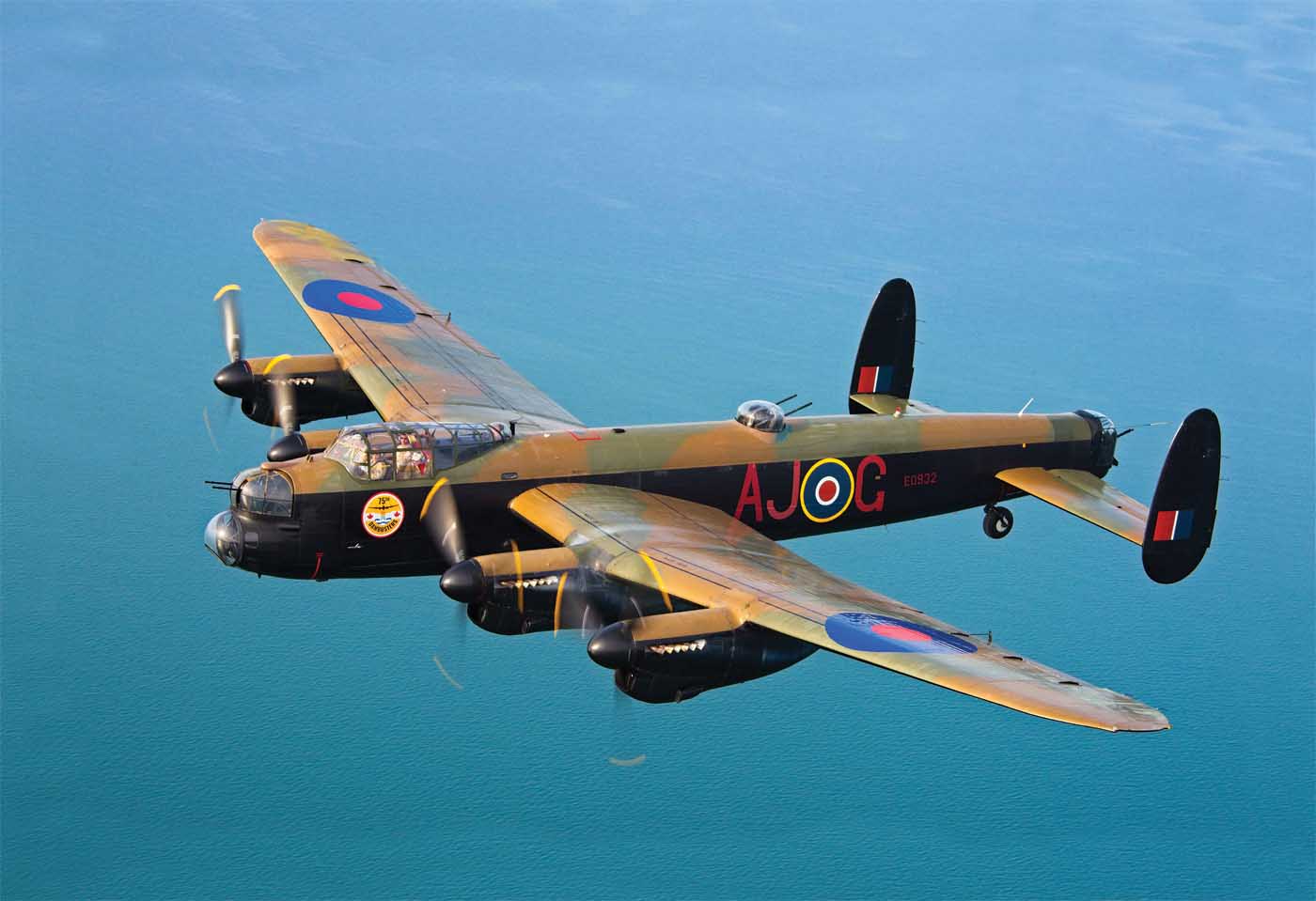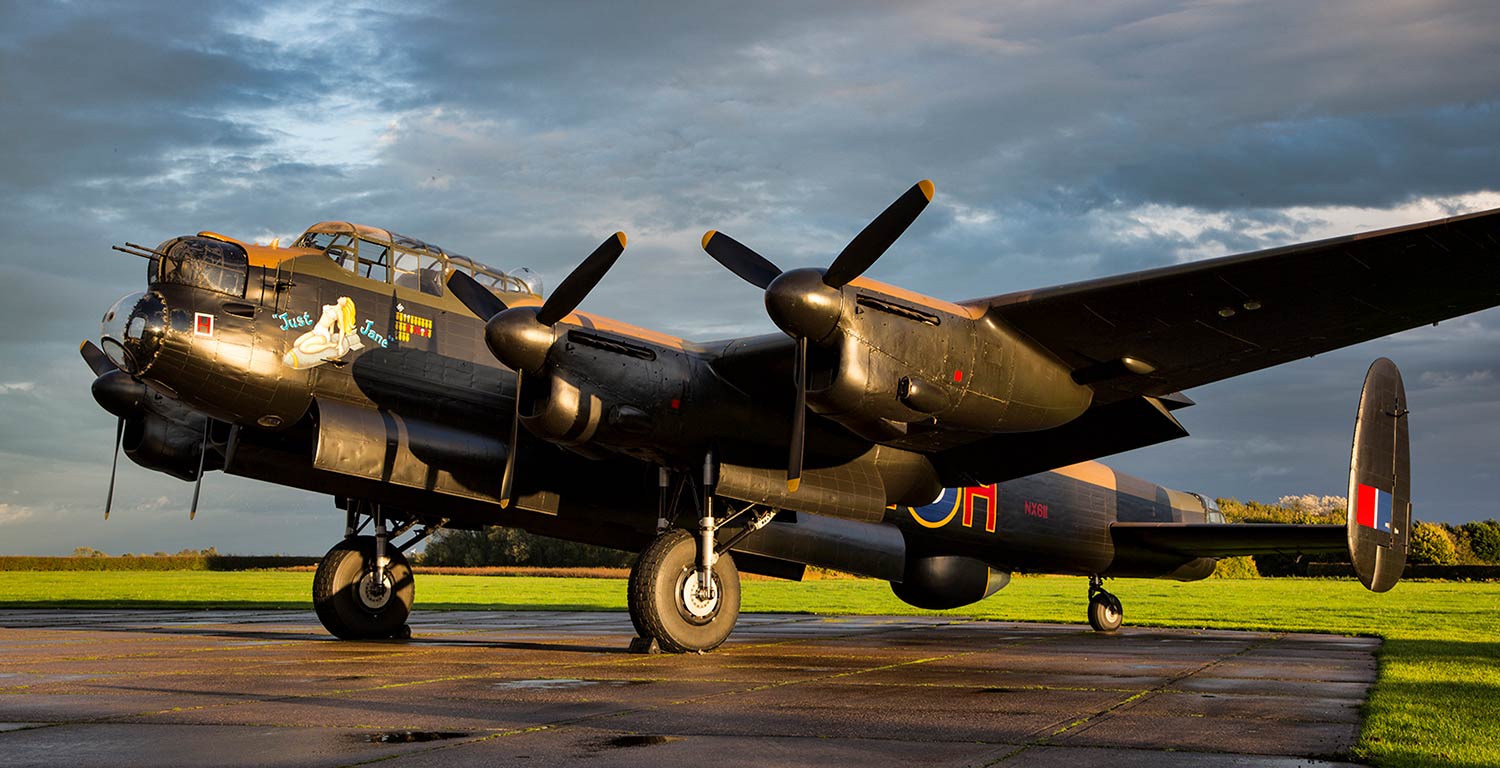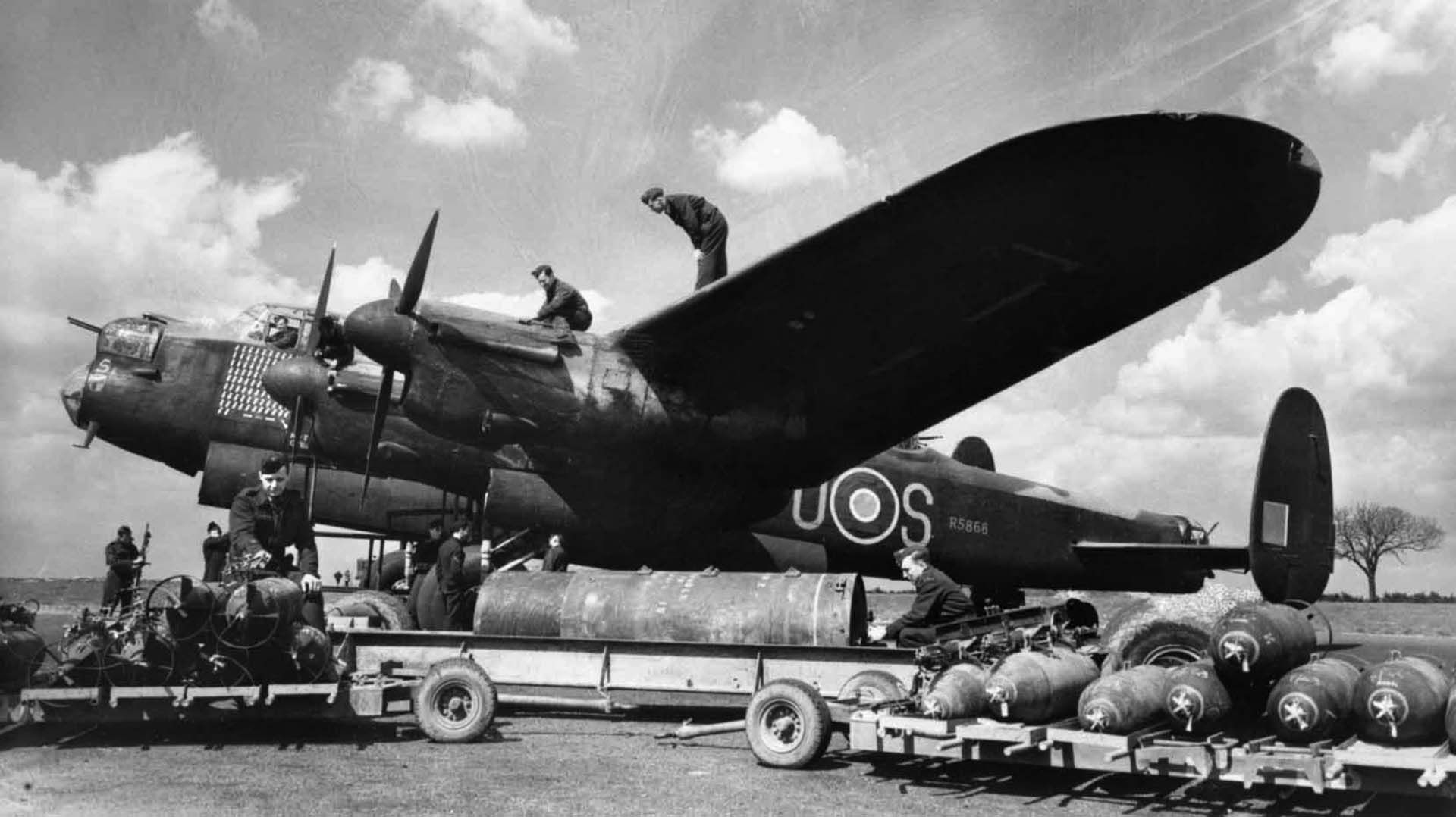
The British Avro Lancaster bomber is one of the most iconic and revered aircraft in the history of aviation. Built to carry out some of the most daring and dangerous bombing raids during World War II, the Lancaster played a crucial role in the Allied victory.
A true symbol of British ingenuity and resilience, this aircraft became the backbone of the Royal Air Force's (RAF) strategic bombing campaign, contributing to the destruction of Nazi Germany’s war machine.
Even decades after its service, the Lancaster remains an emblem of bravery, power, and the indomitable spirit of the Allied forces during one of the darkest periods in human history.
The Lancaster bomber, first introduced in 1942, was a four-engine heavy bomber designed to carry a significant payload over long distances. Unlike other bombers of its time, the Lancaster was capable of delivering both high-explosive and precision bombs, including the famous “bouncing bombs” used during the Dambusters raid.
It was also one of the few aircraft able to carry the massive Grand Slam bomb, the largest conventional bomb ever built in the UK during the war. These capabilities made the Lancaster an invaluable asset to the RAF, which relied on it to carry out night-time bombing raids against German industrial centers, military targets, and transportation hubs.

The Role of the Lancaster Bomber in World War II
The Lancaster bomber’s primary role in World War II was to carry out strategic bombing missions over enemy territory, particularly in Germany. The idea behind strategic bombing was to weaken the enemy’s infrastructure, disrupt supply lines, and damage their war production capabilities.
The RAF’s Bomber Command, under the leadership of Sir Arthur Harris, employed Lancasters to execute these missions, often flying at night to avoid enemy defenses.
The bomber’s most significant contributions came during key moments in the war, such as the bombing of German industrial centers, oil refineries, and transportation networks.
In particular, the Lancaster was instrumental in the famous raids on the Ruhr Valley, an area that housed critical German industry, including steel production and coal mines. These raids were designed to cripple Germany’s ability to produce weapons, equipment, and supplies for the war effort.
One of the most celebrated operations involving the Lancaster was the Dambusters Raid of May 1943, in which a specially modified version of the Lancaster bomber, under the command of Wing Commander Guy Gibson, flew low-level night raids to destroy key dams in the Ruhr Valley.
The raid was a success, breaching the dams and flooding the valley, which caused widespread disruption to the German war effort. This mission, while difficult and dangerous, showcased the exceptional capabilities of the Lancaster and the bravery of the crews that flew it.
Another important use of the Lancaster bomber was in the Battle of the Atlantic, where it played a vital role in attacking German U-boat bases and naval vessels. The Lancaster’s large payload allowed it to carry torpedoes, which were used effectively in anti-shipping missions, helping to secure Allied control of the seas.
Despite the risks, Lancaster crews flew over 156,000 sorties during the war, and more than 3,000 Lancasters were built by the time the war ended. The aircraft’s versatility and reliability allowed it to be used in a variety of operations, and its success helped to establish the RAF’s dominance in strategic bombing.

The Lancaster Bomber’s Legacy
The Lancaster bomber’s legacy is a testament to the bravery and resilience of the crews that flew it and the importance of air power in modern warfare. The aircraft was responsible for delivering some of the most devastating blows to the German war machine, and its success was instrumental in the Allied victory in Europe. But the Lancaster’s legacy extends beyond its military achievements.
It represents the spirit of cooperation and innovation that defined the Allied war effort. The Lancaster was not only a product of British engineering but also a symbol of the collaboration between various Allied nations, including Canada and Australia, who contributed to its development and production.
The role of the Lancaster bomber in the war is also closely tied to the bravery and sacrifices of the men who flew it. Bomber crews faced tremendous risks on every mission, often flying into heavily defended areas and enduring constant threats from enemy aircraft and anti-aircraft fire.
The crews of the Lancaster bombers were often young men, many of whom did not survive the war. The courage displayed by these men, as well as the crews’ commitment to the mission, is a testament to the sacrifices made by those who fought during World War II.
After the war, the Lancaster continued to serve in various roles, including as a transport and reconnaissance aircraft for the RAF. It remained in service until 1963, and many of the aircraft were eventually retired and sent to museums or preserved by aviation enthusiasts.
Today, a number of Lancaster bombers are on display in museums across the world, including in Canada, the United Kingdom, and Australia, where they serve as a reminder of the aircraft’s contribution to history and the sacrifices made by those who flew them.

Modern-Day Revival: A Glimpse into the Past
In recent years, the Lancaster bomber has experienced a form of revival, as modern-day aviation enthusiasts and historians work to preserve the legacy of this remarkable aircraft.
The restoration and startup of a Lancaster bomber, as seen in the rare footage of the aircraft being powered up, serve as both a tribute to the past and a reminder of the technological advancements that made the Lancaster one of the most powerful bombers of its time.
The startup of a Lancaster bomber is a rare and awe-inspiring moment, as it represents a direct link to the past—when the aircraft played a critical role in the fight against tyranny.
Watching the massive engines come to life once again brings the legacy of the Lancaster bomber into the present, allowing new generations to connect with the history of World War II and appreciate the sacrifices made by the men and women who fought in it.
The sound of the engines, the rumble of the aircraft on the runway, and the sight of the Lancaster lifting into the air are all reminders of the power, resilience, and courage that defined this iconic aircraft.
Today, only a few Lancaster bombers remain in flying condition, with dedicated groups of aviation enthusiasts and veterans working tirelessly to preserve these historic machines.
These flying Lancasters are often used for commemorative flights, special events, and airshows, allowing people to experience the aircraft as it was during World War II.
These flights provide an opportunity to pay tribute to the bravery of the crews that flew them and to ensure that the legacy of the Lancaster bomber lives on for future generations.

Conclusion
The Lancaster bomber was one of the most important aircraft of World War II, playing a key role in the Allied victory over Nazi Germany. It became the backbone of the RAF’s strategic bombing campaign, carrying out critical missions that helped to cripple the German war effort.
The bomber’s legacy lives on today, not only as a reminder of the technological advancements of the time but also as a tribute to the courage and sacrifices of the men who flew it.
The restoration and revival of the Lancaster bomber today allow us to remember its critical role in shaping history and ensure that the sacrifices of those who served with it are never forgotten.
The Lancaster’s story is a testament to the power of innovation, determination, and the unyielding spirit of those who fought for freedom during one of the most pivotal times in world history.
Its engines may have stopped for decades, but the spirit of the Lancaster bomber continues to resonate in the hearts of all who remember its remarkable legacy.
-1749570808-q80.webp)
-1749548677-q80.webp)
-1749634565-q80.webp)
-1749635988-q80.webp)